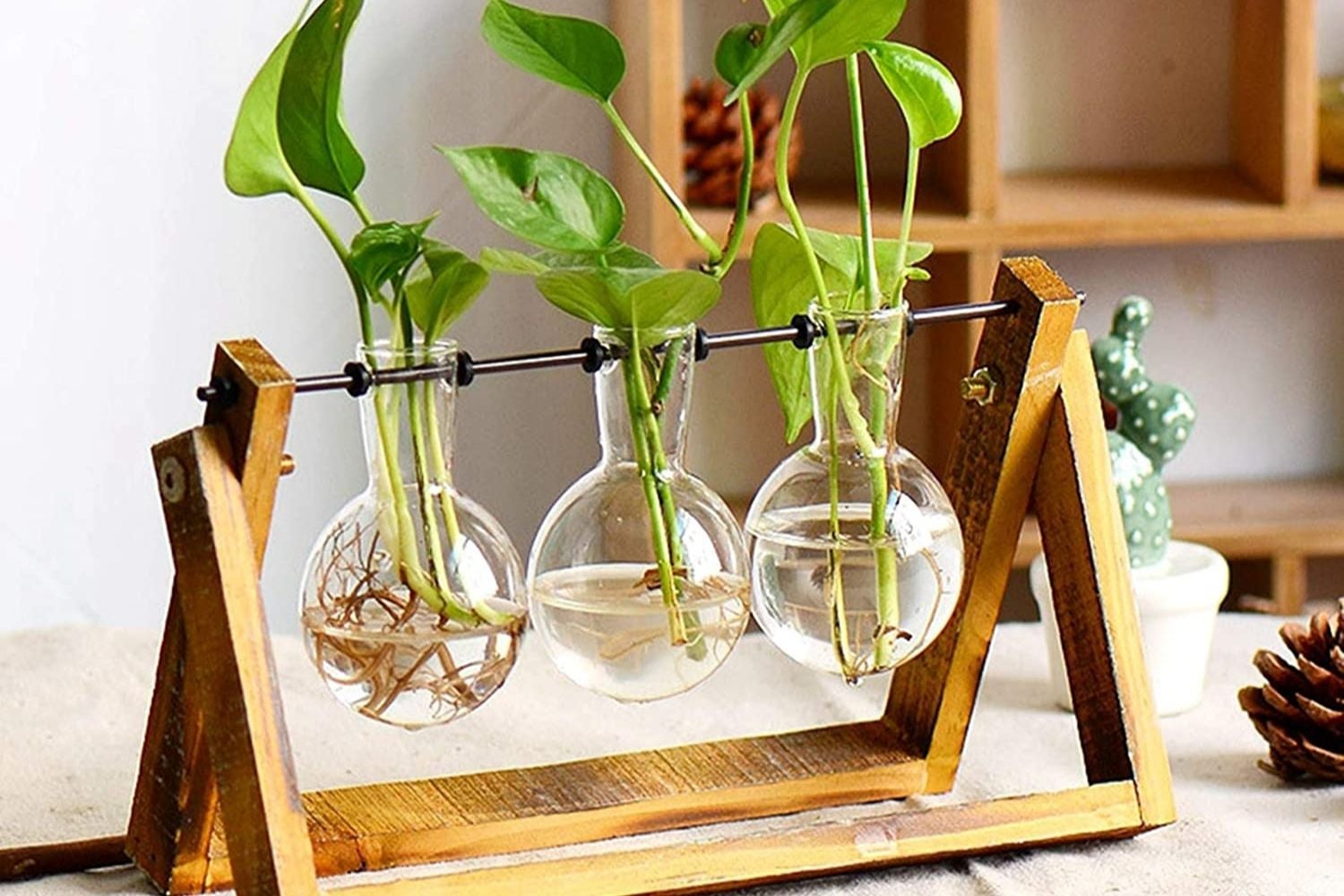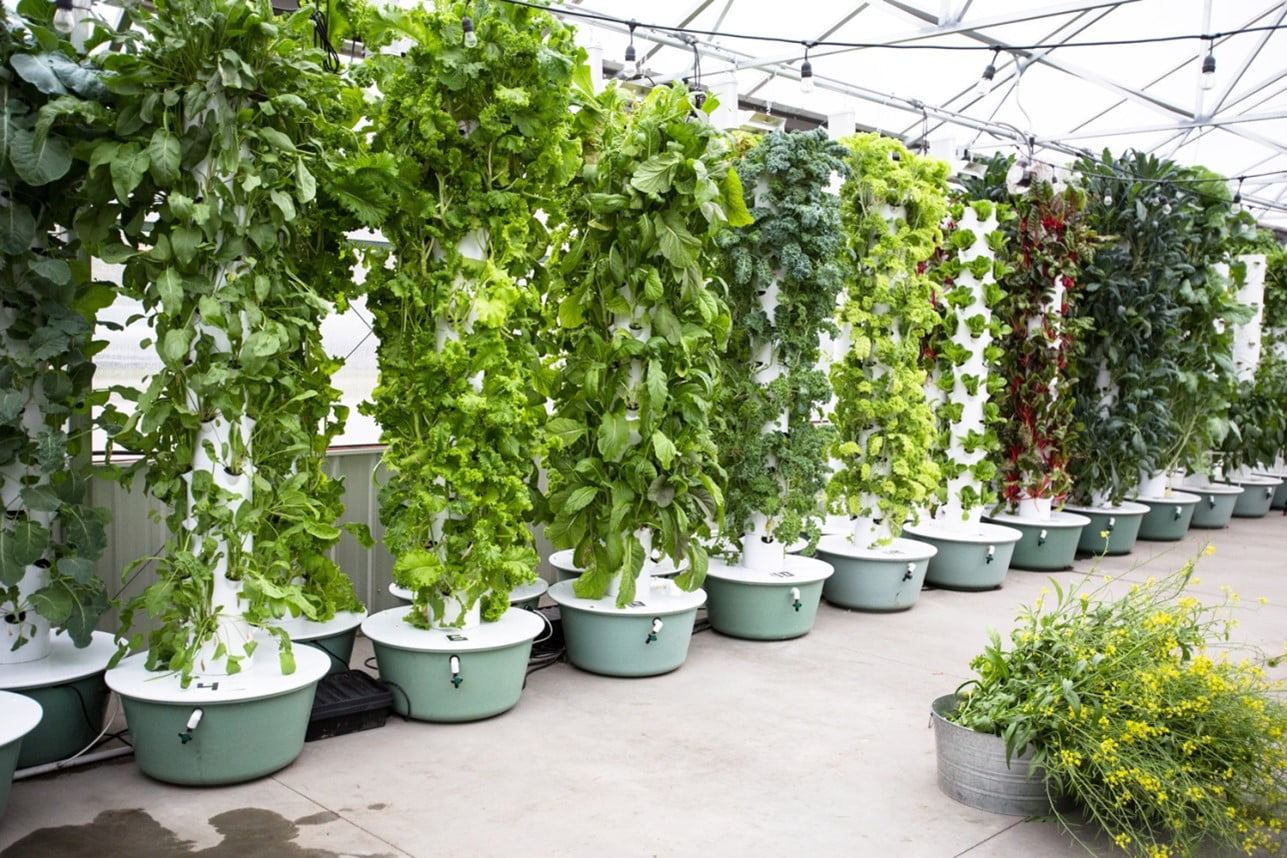Welcome to Hydroponics Depot, the ultimate destination for all your indoor gardening needs. In this comprehensive guide, we’ll dive into the world of hydroponics, exploring its benefits, different types of systems, essential equipment, plant selection, troubleshooting, and more. Get ready to unlock the secrets of successful hydroponic gardening!
Hydroponics, the art of growing plants in nutrient-rich water solutions, offers a plethora of advantages for indoor gardeners. From increased yield and reduced water consumption to improved plant health and year-round cultivation, hydroponics is revolutionizing the way we grow food.
Introduction
Hydroponics is a method of growing plants without soil, using mineral-rich water. It offers numerous benefits, including increased growth rates, higher yields, and less water usage compared to traditional soil-based gardening. Hydroponic depots play a crucial role in indoor gardening by providing a controlled environment and the necessary equipment for successful hydroponic cultivation.
Hydroponic depots typically offer a wide range of products, including hydroponic systems, grow lights, nutrients, and other essential supplies. They serve as a one-stop shop for hydroponic enthusiasts, providing everything needed to set up and maintain a thriving indoor garden.
Importance of Hydroponic Depots for Indoor Gardening
- Controlled Environment:Hydroponic depots provide a controlled environment for indoor gardening, allowing growers to regulate factors such as temperature, humidity, and light intensity. This is especially important for growing plants in regions with unpredictable weather conditions or limited outdoor space.
- Access to Essential Equipment:Hydroponic depots offer access to a wide range of hydroponic equipment, including grow systems, lighting, and nutrient solutions. These components are essential for successful hydroponic cultivation and can be difficult to source individually.
- Expert Advice:Many hydroponic depots employ knowledgeable staff who can provide expert advice and guidance to both novice and experienced growers. This can be invaluable for troubleshooting problems, selecting the right equipment, and optimizing plant growth.
Types of Hydroponic Systems
Hydroponic systems vary in design and operation, offering different advantages and challenges. Understanding the different types of hydroponic systems is essential for choosing the most suitable one for your needs.
Deep Water Culture (DWC), Hydroponics depot
In DWC systems, plants are suspended in a nutrient-rich water solution. The roots are constantly submerged, allowing for maximum nutrient uptake. DWC systems are relatively easy to set up and maintain, but they require a reliable water supply and regular monitoring of nutrient levels.
Nutrient Film Technique (NFT)
NFT systems involve a thin film of nutrient solution that flows over the roots of plants. The roots are suspended in air, allowing for excellent oxygenation. NFT systems are efficient in water and nutrient usage, but they require a precise balance of nutrient concentration and flow rate.
Aeroponics
Aeroponic systems suspend plant roots in the air and mist them with a nutrient solution. The constant exposure to oxygen promotes vigorous root growth. Aeroponics systems offer high yields and nutrient efficiency, but they require a controlled environment with precise monitoring of humidity, temperature, and nutrient levels.
Equipment and Supplies

To establish and maintain a successful hydroponic depot, it is crucial to equip it with the necessary equipment and supplies. These components play vital roles in ensuring optimal plant growth and overall system functionality.
Here’s a comprehensive list of essential equipment and supplies for hydroponic depots:
Grow Lights
Grow lights provide artificial light to plants, mimicking natural sunlight and promoting photosynthesis. Consider factors such as wattage, spectrum, and coverage area when selecting grow lights.
- LED Grow Lights: Efficient, long-lasting, and offer targeted light spectrums.
- High-Pressure Sodium (HPS) Lights: High-intensity, widely used for flowering and fruiting stages.
- Fluorescent Lights: Energy-efficient, suitable for seedlings and vegetative growth.
Nutrient Solutions
Nutrient solutions provide essential minerals and nutrients to plants in hydroponic systems. Choose balanced formulations that cater to the specific plant species and growth stage.
- General Hydroponics Flora Series: A comprehensive range of nutrient solutions for various plant needs.
- Advanced Nutrients pH Perfect Sensi Grow and Bloom: Formulated to maintain optimal pH levels.
- FoxFarm Hydroponic Nutrient Trio: A complete nutrient system for all stages of plant growth.
pH Meters
pH meters measure the acidity or alkalinity of nutrient solutions. Maintaining the correct pH level is critical for nutrient uptake and overall plant health.
- Bluelab pH Pen: Accurate and easy-to-use handheld pH meter.
- Apera Instruments pH60: A durable and reliable benchtop pH meter.
- Hanna Instruments pHep® 5: A pocket-sized pH meter with automatic temperature compensation.
Water Pumps
Water pumps circulate nutrient solutions throughout the hydroponic system, ensuring even distribution and oxygenation.
- EcoPlus Submersible Water Pump: A quiet and energy-efficient pump for small to medium-sized systems.
- Laguna PowerJet Submersible Pump: A powerful pump suitable for large-scale hydroponic setups.
- Jebao DCT Series Circulation Pump: A high-flow pump with adjustable flow rates.
Plant Selection and Cultivation

When selecting plants for hydroponic depots, consider factors such as growth habit, nutrient requirements, and susceptibility to pests and diseases. Choose plants that are well-suited to the specific hydroponic system and environmental conditions.
Suitable Plant Varieties
- Leafy greens: Lettuce, spinach, kale, Swiss chard
- Herbs: Basil, cilantro, mint, parsley
- Fruits: Strawberries, tomatoes, cucumbers, peppers
- Vining crops: Beans, peas, cucumbers
Plant Spacing
Plant spacing depends on the plant size and growth habit. Allow enough space for plants to grow without overcrowding, which can lead to disease and nutrient competition.
Lighting Requirements
Hydroponic plants require adequate lighting for photosynthesis. Provide artificial lighting or choose a location with sufficient natural light. The light intensity and duration should match the plant’s specific requirements.
Nutrient Management
Hydroponic plants receive nutrients from the nutrient solution. Monitor the nutrient levels regularly and adjust as needed to ensure optimal plant growth. Consider using a nutrient solution specifically formulated for hydroponics.
Troubleshooting Common Issues
Hydroponic depots can experience various issues that may affect plant growth and productivity. Understanding the causes and symptoms of these issues is crucial for effective troubleshooting and resolving them promptly.
Hydroponics Depot provides everything you need to start your own hydroponic garden. From grow lights to nutrients, we have everything you need to get started. If you’re interested in learning more about aquaponics, we recommend checking out our article on the pond aquaponics system . Aquaponics is a great way to combine fish farming with hydroponics, and it can be a very efficient way to grow food.
Once you’ve learned more about aquaponics, come back to Hydroponics Depot to find all the supplies you need to get started.
Below are some common issues, their causes, and step-by-step troubleshooting steps:
Nutrient Imbalances
- Cause:Improper nutrient solution or incorrect nutrient ratios.
- Symptoms:Yellowing or discolouration of leaves, stunted growth, or nutrient deficiencies.
- Troubleshooting:
- Check the nutrient solution’s pH and adjust it to the optimal range for the plants.
- Measure the nutrient concentration using a conductivity meter and adjust it as needed.
- Inspect the plants for nutrient deficiencies or toxicities based on their symptoms.
pH Fluctuations
- Cause:Imbalance between acidic and alkaline components in the nutrient solution.
- Symptoms:Nutrient deficiencies, poor plant growth, or root damage.
- Troubleshooting:
- Measure the pH of the nutrient solution using a pH meter.
- Adjust the pH using pH up or down solutions as necessary.
- Monitor the pH regularly and make adjustments as needed.
Root Rot
- Cause:Pathogens or excessive moisture in the root zone.
- Symptoms:Brown or black discolouration of roots, stunted growth, or wilting.
- Troubleshooting:
- Inspect the roots for signs of rot or disease.
- Sterilize the hydroponic system and equipment to eliminate pathogens.
- Adjust the nutrient solution to prevent excessive moisture in the root zone.
- Improve aeration in the system to promote root health.
Nutrient Lockout
- Cause:High levels of certain nutrients that prevent the uptake of other nutrients.
- Symptoms:Nutrient deficiencies, stunted growth, or discolouration of leaves.
- Troubleshooting:
- Flush the hydroponic system with clean water to remove excess nutrients.
- Adjust the nutrient solution to ensure a balanced ratio of nutrients.
- Monitor the pH of the nutrient solution and adjust it to the optimal range.
Pests and Diseases
- Cause:Introduction of pests or pathogens into the hydroponic system.
- Symptoms:Visible pests, damaged plants, or signs of disease.
- Troubleshooting:
- Identify the type of pest or disease affecting the plants.
- Implement appropriate pest or disease control measures, such as biological control, chemical treatments, or cultural practices.
- Sterilize the hydroponic system and equipment to prevent further spread.
Advantages and Disadvantages of Hydroponic Depots

Hydroponic depots offer numerous benefits, including increased crop yield, reduced water consumption, and improved plant health. However, there are also potential drawbacks, such as the need for specialized equipment and technical knowledge.
Advantages of Hydroponic Depots
- Increased yield:Hydroponic systems allow for precise control over nutrient delivery, water, and lighting, resulting in optimal growth conditions for plants. This leads to increased crop yields compared to traditional soil-based farming.
- Reduced water consumption:Hydroponic systems use significantly less water than traditional farming methods. The water is recirculated and reused, minimizing water waste.
- Improved plant health:Hydroponic systems provide a sterile environment that reduces the risk of pests and diseases. The controlled nutrient delivery ensures that plants receive the optimal balance of nutrients, leading to improved plant health and vigor.
Disadvantages of Hydroponic Depots
- Need for specialized equipment:Hydroponic systems require specialized equipment, such as grow lights, nutrient reservoirs, and pumps. This equipment can be expensive to purchase and maintain.
- Technical knowledge required:Hydroponic systems require technical knowledge to operate and maintain. Growers need to understand plant nutrition, water management, and lighting requirements to achieve successful results.
Case Studies and Success Stories

Hydroponic depots have emerged as successful ventures, showcasing the transformative power of this innovative farming technique. These depots have employed a range of strategies to optimize crop yields and cater to the needs of commercial growers and home gardeners alike.
One notable success story is the Urban Green House, a rooftop hydroponic farm in Chicago. This depot utilizes vertical farming techniques to maximize space utilization and minimize water consumption. By employing automated systems for nutrient delivery and environmental control, they have achieved impressive yields of leafy greens and herbs, catering to local restaurants and farmers’ markets.
Testimonials
John Smith, the owner of Urban Green House, attributes their success to “a relentless focus on quality control and customer satisfaction.” He emphasizes the importance of partnering with reputable suppliers and implementing rigorous quality checks to ensure the highest standards of produce.
Final Review

As we conclude our journey into the world of hydroponics depots, it’s evident that these innovative systems empower indoor gardeners to achieve exceptional results. With the right knowledge, equipment, and techniques, you can cultivate thriving plants, maximize yields, and enjoy the freshest, most nutritious produce all year round.
Embrace the future of gardening with hydroponics depots and experience the joy of growing your own food in the comfort of your home.
Expert Answers: Hydroponics Depot
What are the benefits of using a hydroponics depot?
Hydroponics depots offer numerous benefits, including increased yield, reduced water consumption, improved plant health, year-round cultivation, and space optimization.
What types of hydroponic systems are available?
There are various hydroponic systems, such as Deep Water Culture (DWC), Nutrient Film Technique (NFT), and Aeroponics, each with its own advantages and disadvantages.
What essential equipment do I need for a hydroponics depot?
Essential equipment includes grow lights, nutrient solutions, pH meters, water pumps, and growing media.
How do I choose the right plants for my hydroponics depot?
Consider factors such as plant size, nutrient requirements, and compatibility with other plants when selecting plants for your hydroponics depot.
